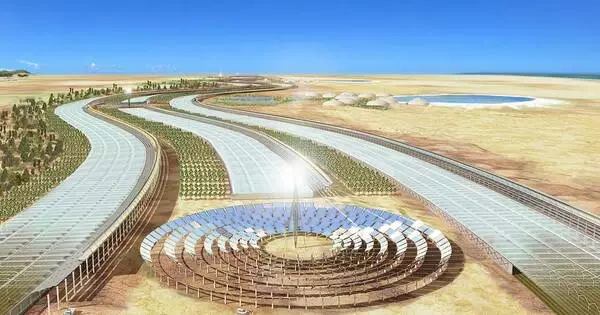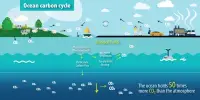A seawater greenhouse is a greenhouse structure that allows crops to grow and fresh water to be produced in arid places, which account for around one-third of the world’s land area. It is a novel agricultural method developed to meet the issues of growing crops in arid or semi-arid locations with scarce freshwater supplies. This is in response to global water scarcity, peak water, and salt-infected soil. Charlie Paton created this concept, which was initially offered in the 1990s.
The main concept of a Seawater Greenhouse is to use the plentiful seawater accessible in coastal areas to produce a controlled environment for plant cultivation while using as little fresh water as possible. The system is powered by seawater and solar energy. It has a structure similar to the pad-and-fan greenhouse, but it has more evaporators and condensers. The seawater is pumped into the greenhouse to provide a chilly and humid climate that is ideal for growing temperate crops. The freshwater is produced in a condensed state as a result of the sun desalination process, which removes salt and contaminants. Finally, the greenhouse’s residual humidified air is removed and used to improve growing conditions for outdoor plants.
Here’s how a Seawater Greenhouse typically works:
- Seawater Evaporation: The seawater is injected into a greenhouse structure and left to evaporate. The seawater is heated by solar radiation, causing it to evaporate. The humidity within the greenhouse rises as water vapor rises.
- Condensation: The greenhouse’s water vapor is subsequently condensed into freshwater. This is typically accomplished by the use of a specifically built roof that allows the water vapor to condense back into liquid form. Freshwater is produced during the condensation process, which can be used for irrigation.
- Climate Control: The greenhouse atmosphere is meticulously managed to ensure that optimal temperature, humidity, and light conditions for plant growth are maintained. This includes regulating temperature and airflow with shading and ventilation systems.
- Saltwater Disposal: The concentrated saltwater that remains after evaporation is typically discharged back into the sea or into a salt pond, preventing soil salinization.
- Plant Cultivation: Crops are grown in the controlled environment of the greenhouse using the freshwater generated from the seawater. This allows for year-round cultivation in arid regions where traditional agriculture might not be feasible due to water scarcity.
Advantages of Seawater Greenhouses:
- Water Efficiency: These are highly efficient in their use of water because they rely on seawater, which is abundant and doesn’t compete with freshwater resources.
- Climate Control: The controlled environment of the greenhouse allows for the cultivation of a wide range of crops regardless of external weather conditions.
- Salinity Management: These systems help prevent soil salinization because excess salt is concentrated and then disposed of, rather than being introduced to the soil.
- Sustainable Agriculture: These can enable sustainable agriculture in water-scarce regions, reducing the pressure on freshwater resources.















